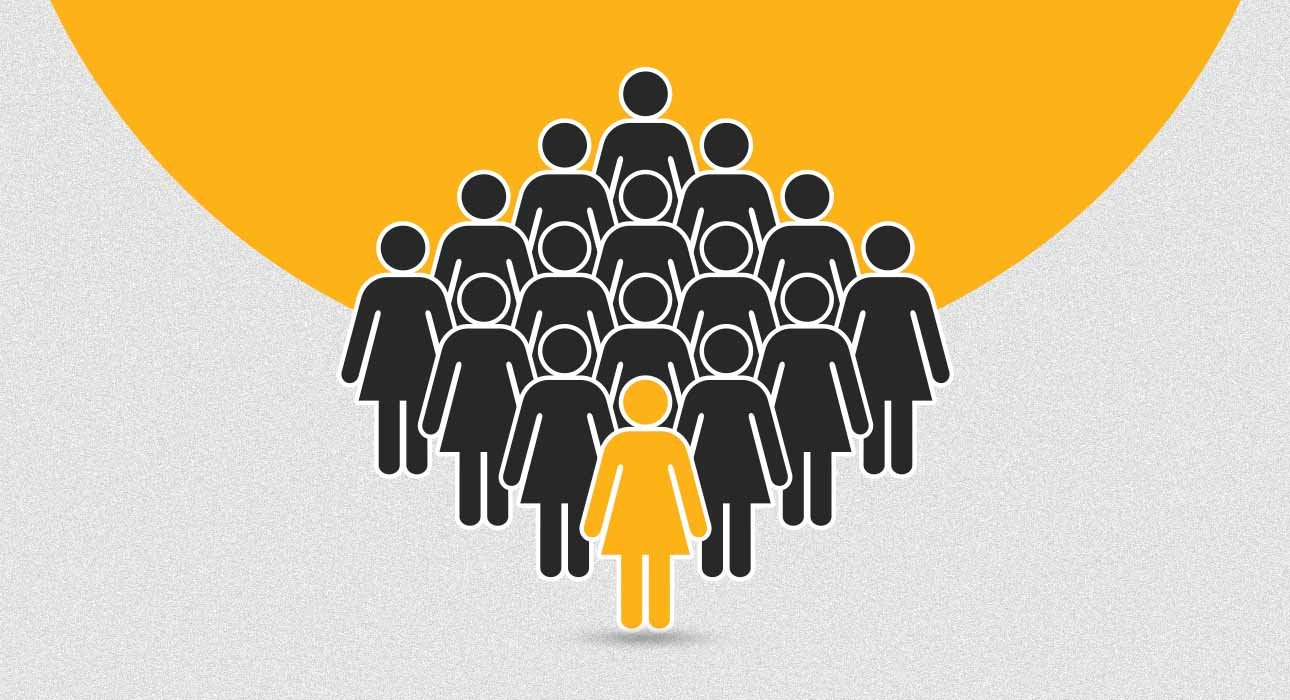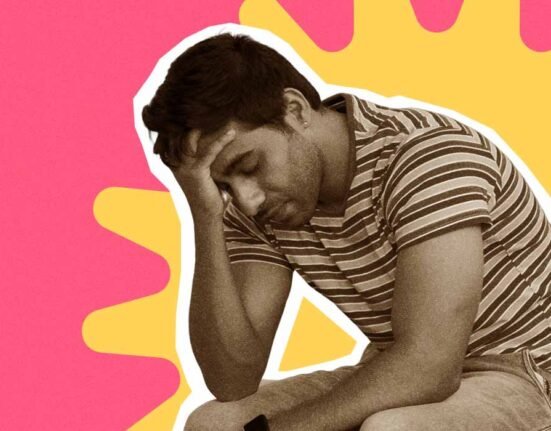Marginalisation is not just about separation or lack of power; it is feeling invisible, as if one’s existence doesn’t matter. When a child is denied education or an individual is denied occupation, or even when an entire community is denied the availability of resources, with a simple excuse that they don’t “belong”, it isn’t just exclusion. The weight of stigma, judgment, prejudices, and discrimination is heavy indeed. And the one who carries it is not only impacted but shaped by it in how they see themselves and the world.
Read More: Discussing Discrimination Through a Mental Health Lens
What is Marginalisation?
According to the American Psychological Association (2023), Marginalisation is the “relegation to or placement in an unimportant or a depowered position in society.”
It is the process of exclusion of certain individuals or groups from mainstream society. This results in cutting off their availability of resources, opportunity or any other power. Marginalisation can be based on several factors, including race, gender, status, ethnicity and more. In the psychological context, it can be especially seen with people dealing with specific mental health issues.
Read More: Gendered Expectations in India: Why Sons Inherit and Daughters Nurture
Why does it occur
- Power imbalance: Power imbalances among different social groups lead to the creation of unequal relationships (Baah, Teitelman & Riegel, 2019). Groups with less power are often denied access to resources and participation in decision-making.
- Discrimination and biases: The existing stereotypes and negative outlook on marginalised groups further lead to systemic biases as policies are often made to discriminate against these groups and bar them from participating in societal processes (Anamika, 2022).
- Poverty: Poverty limits people’s access to important resources required for sustenance, such as occupation, food and security. Additionally, poor people have twice the rate of psychological issues as those with resources (Advancing Mental Health Equality, AHME, resource, 2018). All these factors further facilitate the marginalisation of such groups or individuals.
- Microaggressions and tokenism: These are the subtle slights or hostilities against marginalised communities. The hard work of marginalised communities is often sidelined as being unremarkable or unimportant. Tokenism refers to the practice of including marginalised people, but only as surface-level representation. This aids more stereotypes and biases against such communities. It results in workplace stress and mental health issues (Jackson et al., 1995) and decreased life satisfaction (King et al., 2010).
Theoretical bases: Understanding the psychology behind marginalisation
- Social identity theory (Tajfel & Turner, 1979): This explains that people like to associate themselves with certain groups based on factors such as nationality, region, religion, etc. These are the ingroups. They also differentiate from those who don’t belong to these ingroups, called outgroups. This results in favouritism for one’s own group and prejudices and discrimination for the outgroups.
- Stigma theory (Goffman, 1963): He explained how negative judgements, stigma and prejudices against certain individuals or communities lead to harmful labels, devaluation and their ostracism from mainstream society.
Read More: The Psychology of Ingroup-Outgroup Bias and Social Exclusion of Northeast Indians
How it impacts individuals
1. Mental health
Studies over the years show a strong link between increased marginalisation and negative mental health, with a rise in symptoms of anxiety, depression, suicidal ideation and other issues. A study on urban slum dwellers in Bangladesh during the pandemic showed heightened anxiety in 53% of the population, with about 43% reporting sleep disturbances compared to previous reports (Koly et al., 2021).
2. Self-esteem and worth
Marginalisation often makes the victims feel invisible, that their selves and problems are unimportant. They start to feel that they are not worthy of good things, such as being happy. The feeling of being undervalued has marked effects on one’s evaluation of oneself or self-esteem. For example, people belonging to the LGBTQ+ community more often face bullying and are likely to have lower self-esteem than their cis-het counterparts (Camp, Vitoratou & Rimes, 2020).
3. Stress
Researches show that individuals who are more at risk of Marginalisation and discrimination often deal with increased stress levels. Dealing with a lack of resources, such as opportunities for work, education, and food. And other essentials are often a major cause of stress for such individuals (Murthy, 2020).
Read More: Awareness vs. Discrimination: Why Knowledge Alone Isn’t Enough for Social Change
4. Isolation and loneliness
The social, economic and political exclusion caused by marginalisation leads to the separation of the marginalised groups from the mainstream society. It, by nature, leads to dissociation, disconnection and loneliness (Kidd, 2007), often leading to challenges including lack of a strong social support system, social isolation and a feeling of alienation.
5. Cognitive impact
The constant stress, self-doubt and isolation caused by marginalisation, added with health issues and harmful coping mechanisms like substance abuse, often manifests in forms of alteration in brain and cognitive functioning processes (Edidin et al., 2012).
Preventing Marginalisation
- Raising awareness: To combat marginalisation, especially in cases about mental health, raising awareness through campaigns, workshops, and volunteering is definitely impactful in combating stereotypes, challenging existing myths and breaking the stigma.
- State policies: The government should actively advocate for the improvement of the lives of marginalised people through social support systems, creating an environment that allows everyone to share their problems and let them grow.
- Intergroup contact: This method suggests that through institutionally supported meaningful interactions, intergroup hostilities can be reduced and harmony can be fostered (Allport, 1954).
Conclusion
Marginalisation is the exclusion of certain groups or individuals from mainstream society. It can be based on several factors like religion, nation, ethnicity, gender, caste, mental health & disabilities and many more aspects. Marginalisation can occur due to unequal distribution of power in society, poverty, existing discrimination and bias, as well as token representations and microaggressions. On understanding this through a psychological lens, theories such as social identity and stigma theories can be used to explain marginalisation.
Marginalisation is very harmful to society. It leads to disruption of the social fabric through social isolation, increasing stress and self-worth, worsening mental health and cognition. However, it can be reduced through mutual coordination, spreading awareness, and intergroup contact among different communities. Marginalisation is a serious problem in modern society that can break its unity and integrity. However, through collective efforts, it can be reduced to bring positive changes.
FAQs
1. Why does marginalisation occur?
Marginalisation occurs due to unequal distribution of power in society, poverty, existing discrimination and bias, as well as token representations and microaggressions.
2. How does marginalisation impact individuals?
Marginalisation negatively impacts individuals, leading to social isolation, increasing stress and self-worth, worsening mental health and cognition.
3. How can marginalisation be reduced?
Marginalisation can be reduced through mutual coordination, spreading awareness, and intergroup contact among different communities.
References +
marginalization https://dictionary.apa.org/marginalization
marginalization-discrimination-impact-mental-health https://www.talkspace.com/blog/marginalization-discrimination-impact-mental-health/
Navario, P. S., Upadhaya, N., Hall, B. J., & Yang, L. H. (2023). Editorial: Global mental health among marginalised communities in pandemic emergencies. Frontiers in public health, 11, 1249575. https://doi.org/10.3389/fpubh.2023.1249575
Sevelius, J. M., Gutierrez-Mock, L., Zamudio-Haas, S., McCree, B., Ngo, A., Jackson, A., Clynes, C., Venegas, L., Salinas, A., Herrera, C., Stein, E., Operario, D., & Gamarel, K. (2020). Research with Marginalised Communities: Challenges to Continuity During the COVID-19 Pandemic. AIDS and behaviour, 24(7), 2009–2012. https://doi.org/10.1007/s10461-020-02920-3
Anamika. (2022). Marginalisation and education. International Journal of Novel Research and Development, 7(7), 712–714. https://www.ijnrd.org













Leave feedback about this